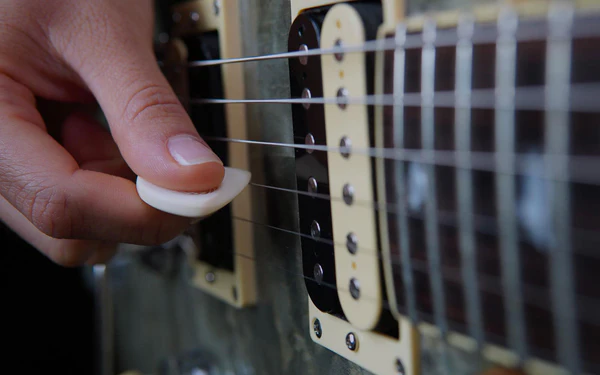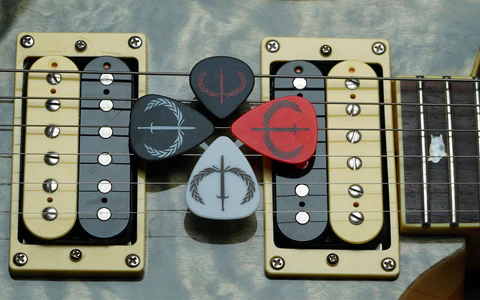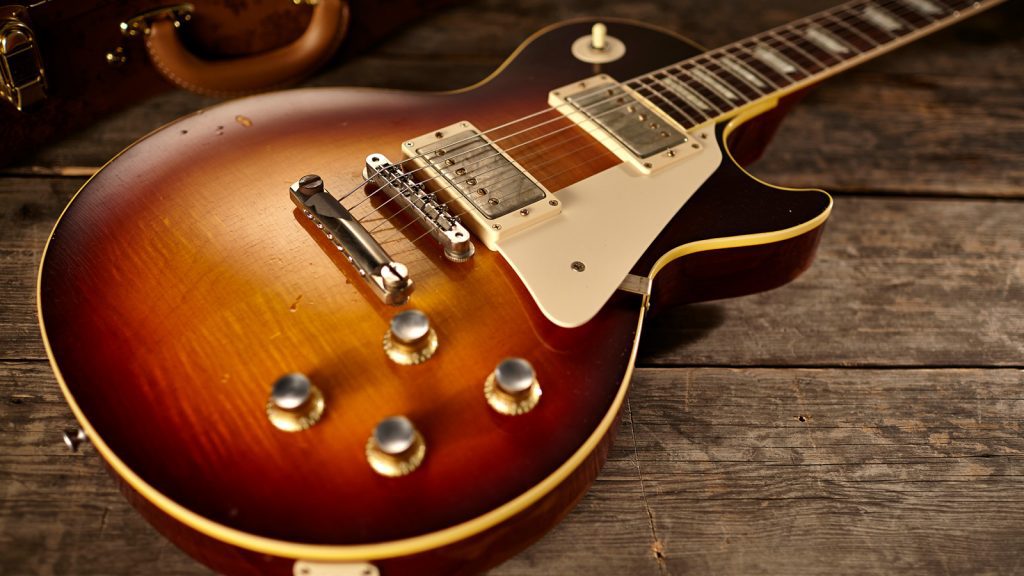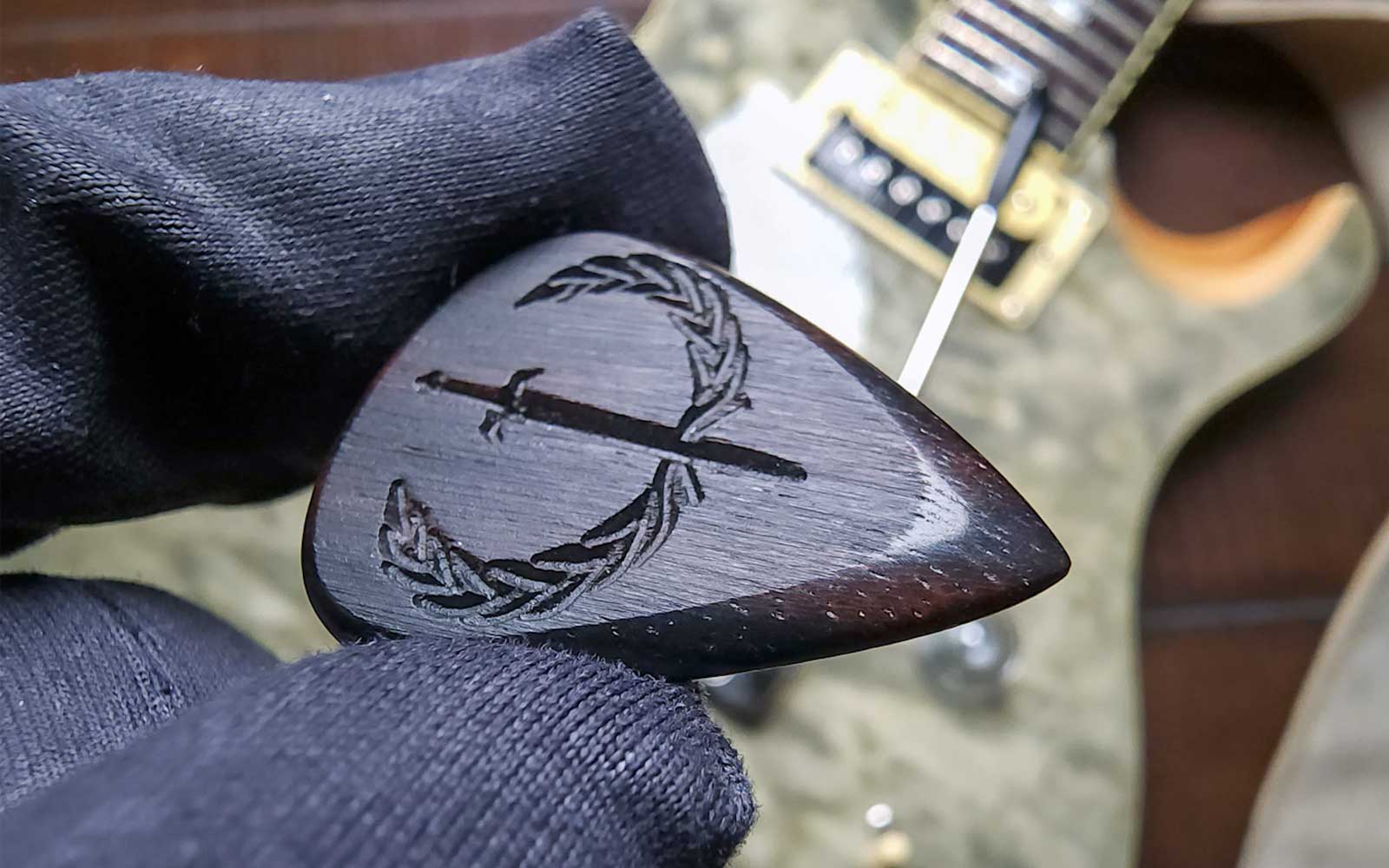Imperial Guitar is a style of playing that originated in the early 20th century and has since become a staple in various genres of music. It is characterized by its intricate fingerpicking patterns, melodic solos, and emphasis on rhythm and dynamics. What sets Imperial Guitar apart from other guitar styles is its unique blend of technicality and emotion, allowing players to create beautiful and expressive music.
The history of Imperial Guitar can be traced back to the early blues musicians of the Mississippi Delta. These musicians, such as Robert Johnson and Blind Willie Johnson, developed a style of playing that incorporated complex fingerpicking patterns and soulful melodies. Over time, this style evolved and influenced other genres such as folk, country, and rock.
One of the key characteristics that sets Imperial Guitar apart from other guitar styles is its emphasis on fingerpicking. Fingerpicking involves using the fingers of the picking hand to pluck the strings instead of using a pick. This technique allows for greater control and precision, enabling players to create intricate melodies and harmonies. Fingerpicking is a fundamental technique in Imperial Guitar and is essential for mastering the style.
Another characteristic that sets Imperial Guitar apart is its unique chord progressions. Imperial Guitar often incorporates complex chord progressions that add depth and complexity to the music. These progressions can include extended chords, such as seventh chords or suspended chords, which create a rich and vibrant sound. Understanding and mastering these chord progressions is crucial for playing Imperial Guitar.
Arpeggios are also commonly used in Imperial Guitar. An arpeggio is when the notes of a chord are played individually instead of strummed together. This technique adds a melodic element to the music and allows for more expressive playing. Learning different arpeggio patterns and incorporating them into your playing can greatly enhance your Imperial Guitar skills.
Harmonics are another important technique in Imperial Guitar. Harmonics are created by lightly touching the strings at specific points to produce a bell-like sound. This technique adds a unique and ethereal quality to the music. Mastering harmonics can take time and practice, but it is well worth the effort for achieving that distinctive Imperial Guitar sound.
Essential Techniques for PLaying Imperial Guitar

To become proficient in playing Imperial Guitar, there are several essential techniques that you need to master. These techniques include fingerpicking, chord progressions, arpeggios, and harmonics.
Fingerpicking is the foundation of Imperial Guitar playing. It involves using your fingers to pluck the strings instead of using a pick. This technique allows for greater control and precision, enabling you to create intricate melodies and harmonies. To develop your fingerpicking skills, start by practicing basic patterns such as alternating bass notes with your thumb while plucking the melody with your other fingers. As you become more comfortable, you can experiment with more complex patterns and incorporate them into your playing.
Chord progressions are another essential aspect of Imperial Guitar playing. They provide the harmonic structure for your music and add depth and complexity to your playing. Start by learning common chord progressions such as the I-IV-V progression or the 12-bar blues progression. Practice transitioning between chords smoothly and experiment with different voicings and inversions to add variety to your playing.
Arpeggios are melodic patterns that involve playing the individual notes of a chord instead of strumming them together. They add a melodic element to your playing and allow for more expressive solos. Start by learning basic arpeggio patterns for common chords such as major, minor, and dominant seventh chords. Practice playing these patterns slowly and gradually increase your speed as you become more comfortable.
Harmonics are another important technique in Imperial Guitar playing. They add a unique and ethereal quality to your music. To produce harmonics, lightly touch the strings at specific points while plucking them. Experiment with different points along the string to find the sweet spots for producing clear and resonant harmonics. Practice incorporating harmonics into your playing to add depth and texture to your music.
Choosing the Right Guitar for Imperial Style
When it comes to playing Imperial Guitar, choosing the right guitar is crucial. The type of guitar you choose will greatly affect your sound and playing experience. There are several factors to consider when selecting a guitar for Imperial style, including acoustic vs. electric, body shape and size, and string gauge and material.
Acoustic guitars are commonly used in Imperial Guitar playing due to their warm and rich tone. They produce a natural sound that is well-suited for fingerpicking and strumming. Acoustic guitars also tend to have a larger body size, which enhances their volume and projection. If you prefer a more traditional sound and enjoy playing acoustically, an acoustic guitar would be a great choice for Imperial style.
On the other hand, electric guitars offer a different sound and playing experience. They have a thinner body and produce a brighter tone compared to acoustic guitars. Electric guitars are often used in genres such as rock and blues, which can also be incorporated into Imperial style. Electric guitars allow for greater versatility in terms of tone shaping and effects, making them a popular choice for players who want to experiment with different sounds.
Body shape and size are also important considerations when choosing a guitar for Imperial style. The body shape affects the overall tone and playability of the guitar. Dreadnought or jumbo-sized acoustic guitars are commonly used in Imperial style due to their deep and resonant tone. These larger body sizes provide more volume and projection, which is ideal for fingerpicking and strumming.
String gauge and material also play a role in the sound and playability of the guitar. Lighter gauge strings are easier to play and produce a brighter tone, while heavier gauge strings offer more volume and sustain. The choice of string material, such as bronze or phosphor bronze, can also affect the tone and feel of the guitar. Experiment with different string gauges and materials to find the ones that suit your playing style and preferences.
Understanding the Role of Rhythm in Imperial Guitar
Rhythm is a fundamental aspect of Imperial Guitar playing. It provides the foundation for the music and sets the groove and feel. Understanding the importance of rhythm in Imperial style, learning common rhythm patterns, and improving your rhythm playing are essential for mastering this style.
Rhythm is what gives music its pulse and groove. In Imperial Guitar playing, rhythm is often emphasized through fingerpicking patterns and strumming techniques. The way you accentuate certain beats or syncopate rhythms can greatly affect the overall feel of the music. It is important to develop a strong sense of timing and feel to create a solid rhythmic foundation for your playing.
Common rhythm patterns in Imperial Guitar include alternating bass notes with your thumb while plucking the melody with your other fingers, strumming patterns using a pick or your fingers, and syncopated rhythms that add a sense of groove and swing to the music. Practice these rhythm patterns slowly at first, focusing on accuracy and timing. Gradually increase your speed as you become more comfortable.
Improving your rhythm playing in Imperial style requires practice and repetition. Start by practicing with a metronome to develop a steady sense of timing. Focus on playing in time with the metronome and gradually increase the tempo as you become more comfortable. It is also helpful to listen to recordings of Imperial Guitar players and try to emulate their rhythmic feel and phrasing.
Another tip for improving your rhythm playing is to experiment with different strumming techniques and patterns. Try using different parts of your hand, such as the palm or the back of your fingers, to create different sounds and textures. Incorporate accents and dynamics into your playing to add variety and interest to your rhythm.
Tips for Improving Your Soloing in Imperial Guitar

Soloing is an important aspect of Imperial Guitar playing. It allows you to express yourself and add your own unique voice to the music. To improve your soloing in Imperial style, it is important to understand the scales and modes commonly used, learn techniques for creating melodic solos, and practice improvisation.
Scales and modes are the building blocks of soloing in Imperial Guitar. The most commonly used scale in this style is the pentatonic scale, which consists of five notes. The pentatonic scale is versatile and can be used in various musical contexts. Other scales commonly used in Imperial style include the major scale, the blues scale, and the mixolydian mode. Practice these scales in different positions on the neck to develop your familiarity and dexterity.
Techniques for creating melodic solos in Imperial Guitar include bending, vibrato, slides, and hammer-ons/pull-offs. Bending involves pushing or pulling a string to change its pitch. Vibrato is a technique used to add expression and sustain to a note by rapidly oscillating the pitch. Slides involve smoothly transitioning from one note to another by sliding your finger along the string. Hammer-ons and pull-offs are techniques used to create legato passages by using the strength of your fretting hand fingers to sound notes without picking.
Improvisation is an important skill to develop in Imperial Guitar playing. It allows you to create spontaneous and unique solos on the spot. To improve your improvisational skills, start by practicing over common chord progressions such as the 12-bar blues or a I-IV-V progression. Focus on playing melodies that fit within the chord changes and experiment with different scales and techniques. As you become more comfortable, try incorporating different rhythms and phrasing into your improvisation.
Learning the Art of Fingerpicking in Imperial Style
Fingerpicking is a fundamental technique in Imperial Guitar playing. It allows for greater control and precision, enabling players to create intricate melodies and harmonies. To master the art of fingerpicking in Imperial style, it is important to learn commonly used fingerpicking patterns, practice exercises for improving fingerpicking technique, and incorporate fingerpicking into your playing.
There are several fingerpicking patterns commonly used in Imperial Guitar playing. One of the most basic patterns is the alternating bass pattern, where you alternate between plucking the bass note with your thumb and plucking the melody with your other fingers. Another common pattern is the Travis picking pattern, which involves alternating between the bass note, a pinch (plucking two or more strings simultaneously), and plucking the melody. Practice these patterns slowly at first, focusing on accuracy and timing. Gradually increase your speed as you become more comfortable.
Exercises can help improve your fingerpicking technique in Imperial style. One exercise is to practice playing scales using fingerpicking instead of using a pick. Start with simple scales such as the major scale or the pentatonic scale and gradually increase the difficulty as you become more comfortable. Another exercise is to practice playing arpeggios using fingerpicking. Start with basic arpeggio patterns for common chords and gradually increase the complexity.
Incorporating fingerpicking into your playing is essential for mastering Imperial style. Start by practicing songs that feature fingerpicking patterns, such as “Dust in the Wind” by Kansas or “Blackbird” by The Beatles. Focus on playing the patterns accurately and smoothly. As you become more comfortable, try incorporating fingerpicking into your own compositions or improvisations to add depth and complexity to your playing.
Mastering the Use of Dynamics in Imperial Guitar
Dynamics play a crucial role in Imperial Guitar playing. They add depth and emotion to the music, allowing for greater expressiveness and control. To master the use of dynamics in Imperial style, it is important to understand their importance, learn techniques for creating dynamic contrast, and practice improving your dynamic control.
Dynamics refer to the variation in volume and intensity in music. They can range from soft and delicate to loud and powerful. In Imperial Guitar playing, dynamics are often used to highlight certain phrases or create contrast between different sections of a song. Understanding the importance of dynamics and how they can enhance your playing is essential for mastering Imperial style.
Techniques for creating dynamic contrast in Imperial Guitar include using accents, palm muting, and varying your picking or strumming intensity. Accents involve emphasizing certain notes or chords by playing them louder or with more intensity. Palm muting involves lightly resting the palm of your picking hand on the strings near the bridge to create a muted or percussive sound. Varying your picking or strumming intensity can also create dynamic contrast by playing certain sections louder or softer.
Improving your dynamic control in Imperial style requires practice and experimentation. Start by practicing playing a simple melody or chord progression with varying levels of intensity. Focus on maintaining a consistent rhythm while gradually increasing or decreasing the volume. Experiment with different techniques such as accents, palm muting, and varying your picking or strumming intensity to create different dynamic effects.
Exploring Different Styles within Imperial Guitar

Imperial Guitar encompasses various sub-genres and styles, each with its own unique characteristics and influences. Exploring different styles within Imperial Guitar can broaden your musical horizons and add depth to your playing. Some common sub-genres within Imperial style include Imperial blues, Imperial folk, and Imperial rock.
Imperial blues is a sub-genre of Imperial Guitar that draws heavily from the blues tradition. It is characterized by its soulful melodies, expressive solos, and emphasis on improvisation. Imperial blues often incorporates elements of fingerpicking, slide guitar, and bending techniques. To incorporate Imperial blues into your playing, study the works of blues legends such as Robert Johnson, Blind Willie Johnson, and Muddy Waters. Learn their signature licks and techniques, and experiment with incorporating them into your own playing.
Imperial folk is another sub-genre within Imperial Guitar that focuses on storytelling and acoustic instrumentation. It is characterized by its simple yet poignant melodies, fingerpicking patterns, and introspective lyrics. Imperial folk often incorporates elements of fingerstyle guitar playing and open tunings. To explore Imperial folk, listen to artists such as Bob Dylan, Joni Mitchell, and Nick Drake. Study their songwriting techniques and fingerpicking patterns, and experiment with incorporating them into your own compositions.
Imperial rock is a sub-genre within Imperial Guitar that combines the energy and power of rock music with the intricate fingerpicking patterns of Imperial style. It is characterized by its driving rhythms, melodic solos, and powerful vocals. Imperial rock often incorporates elements of electric guitar playing, distortion, and effects. To explore Imperial rock, listen to bands such as Led Zeppelin, The Rolling Stones, and The Black Keys. Study their guitar riffs and solos, and experiment with incorporating them into your own playing.
